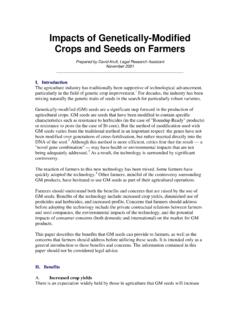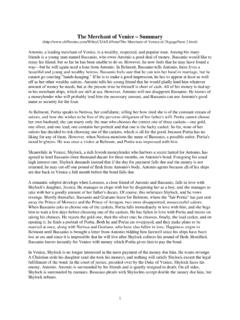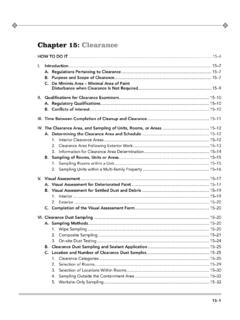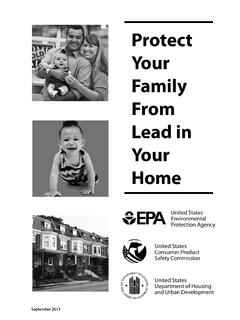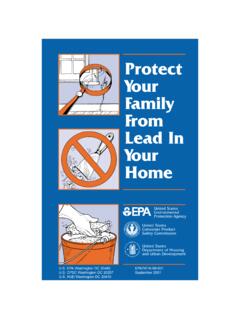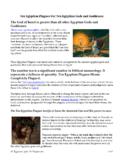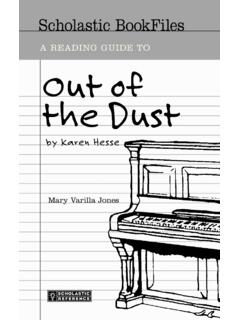Transcription of Pennsylvania Nuisance Law - Penn State Law
1 Pennsylvania Nuisance Law (June 2000) By Jeff Feirick, Legal Research Assistant, Class of 2001 The Agricultural Law Research and Education Center The Pennsylvania State University, The Dickinson School of Law Not so long ago, many people in America lived on a farm or in a rural setting. To visit your neighbor, you had to walk down the gravel lane and across the meadows to get to your neighbor's front door. Today, many people live in cities or in developments where each house is located on a small piece of land. Some people live on lots with no land between their home and their neighbors'. Because people are living closer and closer together, conflicts frequently arise when activities by one landowner affect a neighbor or the community. The ownership of land and property is a right we enjoy in America. With that right comes the responsibility to use our property without annoying or injuring others.
2 " Nuisance " is the term used to describe these conflicts. This paper will discuss the current State of Nuisance law in Pennsylvania . Pennsylvania defines a Nuisance as "a class of wrongs that arise from the unreasonable, unwarrantable, or unlawful use by a person of his own property .. to the right of another, or the public, producing such material annoyance, inconvenience, discomfort or hurt that the law will presume a consequential damage."1 Simply put, Nuisance is one property owner's use of his property in a way which causes harm to another. Distinction between Private and Public Nuisances Nuisances are commonly classified as private or public. In general, a private Nuisance refers to an activity that does not involve physical trespass, but nevertheless interferes with an individual's reasonable use or enjoyment of his or her When this happens the harmed individual brings a lawsuit.
3 For example, a private Nuisance may involve two neighbors disputing over noise generated by a family business. A public Nuisance is an activity that threatens the public health, safety or welfare, or does damage to community The extent to which others are affected by the activity determines whether a Nuisance is public or private. Public nuisances involve a large number of people. For example, the pollution of the town water supply is a public Nuisance , and the government or the parties harmed may bring the lawsuit. Private NuisanceWhile Nuisance law developed many centuries ago, in Kembel v. Schlegel,4 the Pennsylvania Superior Court ruled that section 822 of the Restatement (Second) of Torts contains the authoritative definition of the tort of private Nuisance in Pennsylvania . Section 822 provides: A property owner is subject to liability for a private Nuisance if, but only if, his conduct is the thing that encroaches another's interest in the private use and enjoyment of land, and the encroachment is either a.
4 Intentional and unreasonable, or b. unintentional and otherwise actionable under the rules controlling liability for negligent or reckless conduct, or for abnormally dangerous conditions or Significant Harm to the Normal Person The Restatement section 821F indicates that a person is not subject to liability for interfering with someone else's property rights unless the interference causes significant harm. Significant harm is further defined in section 821F(c): "Significant harm is harm of importance, involving more than slight inconvenience or petty annoyance. The law does not concern itself with trifles, and in the case of a private Nuisance , there must be a real and appreciable interference with the owner's use or enjoyment of his land before he can have a cause of action." Furthermore, the determination of significant harm is harm in the opinion of a "normal person." The Restatement section 821F further defines what is meant by the term "normal person.
5 " "When the encroachment of property involves only personal discomfort or annoyance, it is sometimes difficult to determine whether the encroachment is significant. The standard for the determination of significant character is the standard of normal persons or property in the particular locality. If normal persons living in the community would regard the encroachment of property in question as definitely offensive, seriously annoying or intolerable, then the encroachment is significant." In Karpiak v. Russo,6 several homeowners sued a landscaping supply business because of noise, odor and dust . The Court concluded that the landscaping business might have been annoying and causing an inconvenience, but that it had not reached the level where it was seriously annoying or intolerable. One homeowner complained that dust settled on his home, car and patio furniture requiring him to clean these items.
6 The production of serious amounts of dust from a business can constitute a Nuisance as long as the dust causes significant harm to the complaining party. In this case, the court concluded that the dust did not rise to that level. There was no evidence that the dust caused the home owners' health problems or that it affected their ability to carry on their daily In that same case, another homeowner had complained that the machinery used to run the landscaping business was noisy. The court held that noise during daylight hours was not out of character for that area because trucks traveled on the road by the houses and normally the noise from the machinery stopped after 4:00 pm. The Court noted, in contrast, that in Anderson v. Guerrein Sky-Way Amusement Co.,8 bright lights and noise from a drive-in theater were held to be inconsistent with the residential character of the neighborhood because they prevented the neighbors from sleeping.
7 Punitive DamagesAlso in Karpiak v. Russo,9 the homeowners who lived beside the landscaping business sued for punitive damages. A court may award damages over and above the actual damage done for the purpose of punishing the wrongdoer. In accordance with Kirkbride v. Lisbon Contractors, Inc.,10 Pennsylvania looks to the Restatement (Second) of Torts section 908(2) for the standard for determining when punitive damages may be awarded: "(2) Punitive damages may be awarded for conduct that is outrageous, because of a person's evil motive or his reckless indifference to the rights of others. In assessing punitive damages, the judge or jury can properly consider the character of the person's act, the nature and extent of the harm the person caused or intended to cause and the wealth of the wrongdoer."11 The Court found that the landscaping business was not evil, outrageous, or indifferent.
8 The Court dismissed the request for punitive damages. Examples of Actions Which Have Been Held to be a Private Nuisance in Pennsylvania12 keeping a tiger in a residential area even though the owner had an exotic wildlife permit dust from a truck stop was sufficient to constitute a private Nuisance where health problems to the employees resulted excessive noise from a racetrack in a residential area Inability To Sell Land is Not a Private Nuisance In Golen v. Union Corporation,13 , Inc., the owners of land next to contaminated ground filed a private Nuisance suit, based upon their inability to sell their property. The owners admitted that the land they owned was not contaminated, but the property next to them was listed on the EPA's CERCLA list which provided notice to all potential buyers that the land in that particular area was contaminated. The Court held that the inability to sell property was, by itself, insufficient to establish a private Nuisance because if the court were to grant the request for compensation, liability would attach any time a property owner engaged in an activity that ostensibly reduced surrounding property values.
9 For example, a property owner opening an unpopular public housing project or an AIDS clinic would be held strictly liable for a decline in surrounding property values, and this, the Court said should not Public NuisanceAs noted above, a public Nuisance differs from a private Nuisance in that a public Nuisance harms more people or property and interferes with the rights of the public. It may also involve the violation of a statute. Pennsylvania Courts have adopted Section 821B of the Restatement (Second) of Torts for the elements of a claim for public Section 821B provides: 1. A public Nuisance is an unreasonable interference with a right common to the general public. 2. Circumstances that may sustain a holding that an interference with a public right is unreasonable include the following: a. whether the conduct involves a significant interference with the public health, the public safety, the public peace, the public comfort, or the public convenience, or b.
10 Whether the conduct is proscribed by a statute, ordinance or administrative regulation, or; c. whether the conduct is of a continuing nature or has produced a permanent or long-lasting effect, and, as the person knows or has reason to know, has a significant effect upon the public right. An action may be declared a public Nuisance as a matter of common law, if, though not prohibited by statute, it unreasonably interferes with the rights of the Interference with a public right is unreasonable when the conduct involves a significant interference with the public's safety, the public peace, the public comfort or the public For example in Commonwealth v. Barnes & Tucker Co.,18 the government asked the Court to make the Barnes & Tucker Company clean up an abandoned mine which was polluting a river. The company argued that they were not required to do so under the Clean Streams Law.
